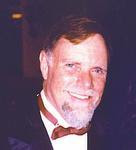It would be difficult to overstate America's obsession with science and technology during the Great Depression. Four magazines best reflected the obsession: Popular Science, Popular Mechanics, Science and Mechanics, and Popular Aviation, all with beautiful color artistry on the cover each month showing some fanciful invention, and an accompanying article inside promising that the wizardry on the cover was just around the corner. Streamlined efficient automobiles, giant airships, speedy single-wing aluminum monoplanes, gigantic steamships of futuristic proportions, buildings constructed of new materials that would allow them to be built to a height of one mile all this was predicted to be just on the horizon. The most imaginative cover art composition, however, was seen in smaller vehicles with dual-use capability such as boats that could travel on land, and cars that could cross water, and especially cars and boats that could take to the air. The extraordinary inventiveness and artistic quality of these magazine covers have made them highly collectible in recent years, and in looking over published anthologies of the 1930s cover art, one finds that fully one out of ten depicted some form of airworthy car or roadworthy airplane.
When citizens in 1939, primed by a decade of exposure to such images on the newsstand, were promised flying cars by 1964, that idea was far less fanciful than the concept of atomic energy or uninterrupted highway travel. The situation becomes even more unbelievable when one finds that, although the designs shown in the cover art were universally impractical and unworkable, many were actually patented. And so the flying car was initially envisioned in the minds of magazine cover artists with no regard for practicality or functionality, and then it was subjected to a certain amount of patentable developmental study before being touted as a travel mode of the future in The World of Tomorrow showcase, but it was too late in achieving actualization and so it finally diminished in importance before ultimately fading from public attention. The thing of it is, it never stopped being a great idea. The logical question is, "What happened?"
What got in the way was World War II. Everything on the 1939 prediction list seemed to have immediate military application- everything, that is, but the dual function air-ground vehicle. The nylon research that would eventually find its way into the women's hosiery market was first applied to parachutes. Even the technology used to supply fresh fruits and vegetables year round had application for food supply in combat environments. The automobile industry, which might have been counted on to consider levitating models, simply went out of the car business during the war, and the aircraft industry was forced to focus exclusively on various types of warplanes. The war completely changed everything.
After the war, the aircraft manufacturers rushed to take the heavy load-carrying capacity developed for bombers and apply it to commercial passenger transports, thus guaranteeing the fulfillment of the 400 mph, 200 passenger airplane prediction on the 1939 list. The car makers, upon returning to civilian production, were simply concerned with survival. Some like Chrysler and Ford and GM made the comeback successfully. Others like Packard and Hudson and Nash and Studebaker and the upstart Kaiser Company fell by the wayside. In such a turbulent time of market shakeout, the research investment needed to make a car fly was unthinkable. Moreover, the public no longer felt like it needed the product, and this more than anything else explains why the airworthy automobile languished in various design stages within the files of the U.S. Patent Office. Postwar car buyers were content just to be able to buy new automobiles again, and the engines that now used war-developed powerplant innovations made the postwar cars so much faster than the prewar models that drivers felt no need to actually leave the ground since most felt like they were flying already. Even those magazines devoted to science and mechanics which had fired the imagination of technophiles in the 1930s had now changed after the war. Photographic progress and development had now made color photographs, not illustrations, the standard for magazine covers, and since airworthy cars didn't exist, they couldn't be photographed. Wartime advancements had given science magazine cover editors things like radar and atomic bombs and V2 rockets to sell their periodicals, leaving the fanciful impractical imaginings of onetime cover illustrators marginalized in the dreamlike nostalgic cloudscape which characterized that distant America back before the war. Everything had changed.
Subscribe to:
Post Comments (Atom)




No comments:
Post a Comment